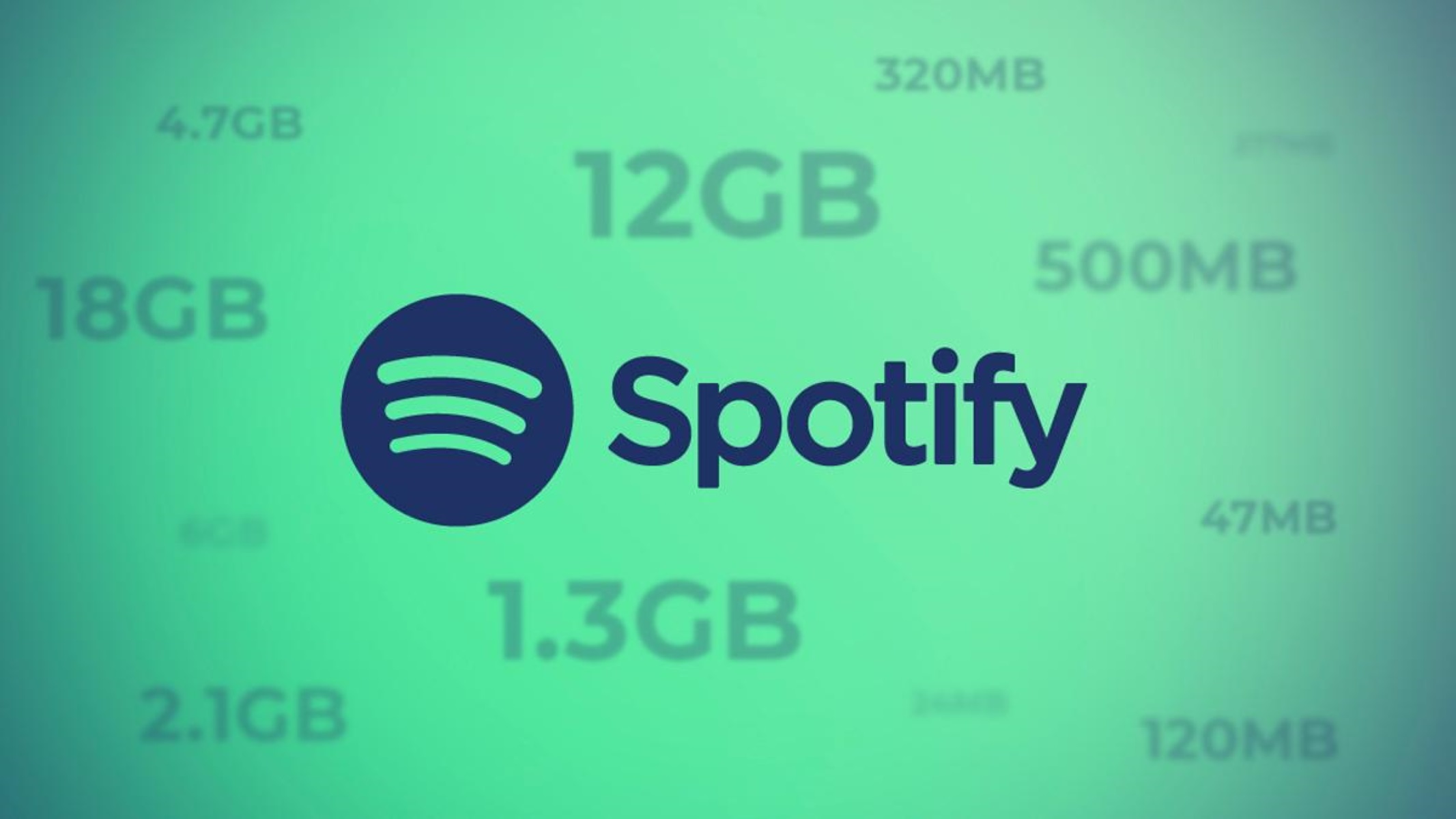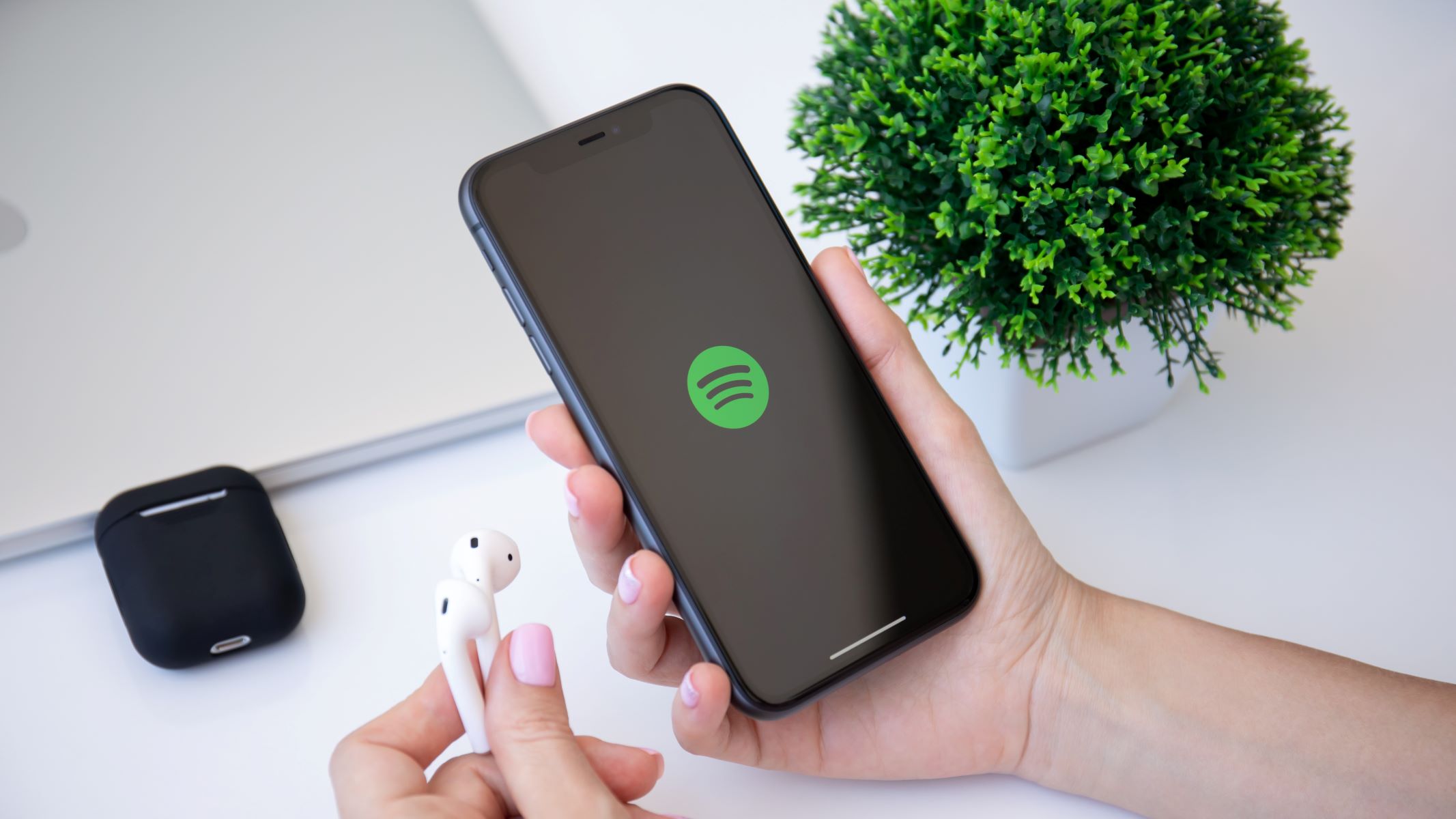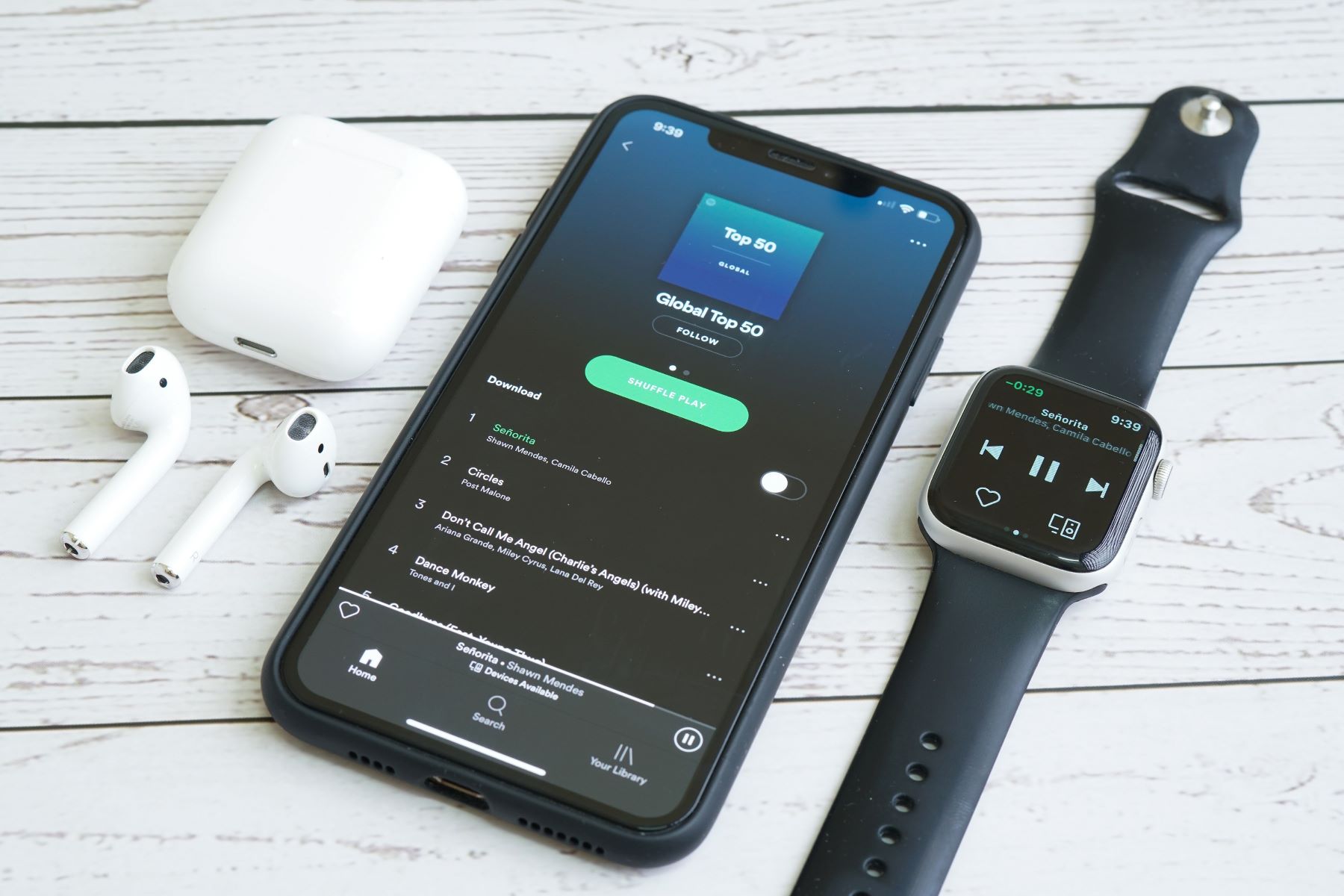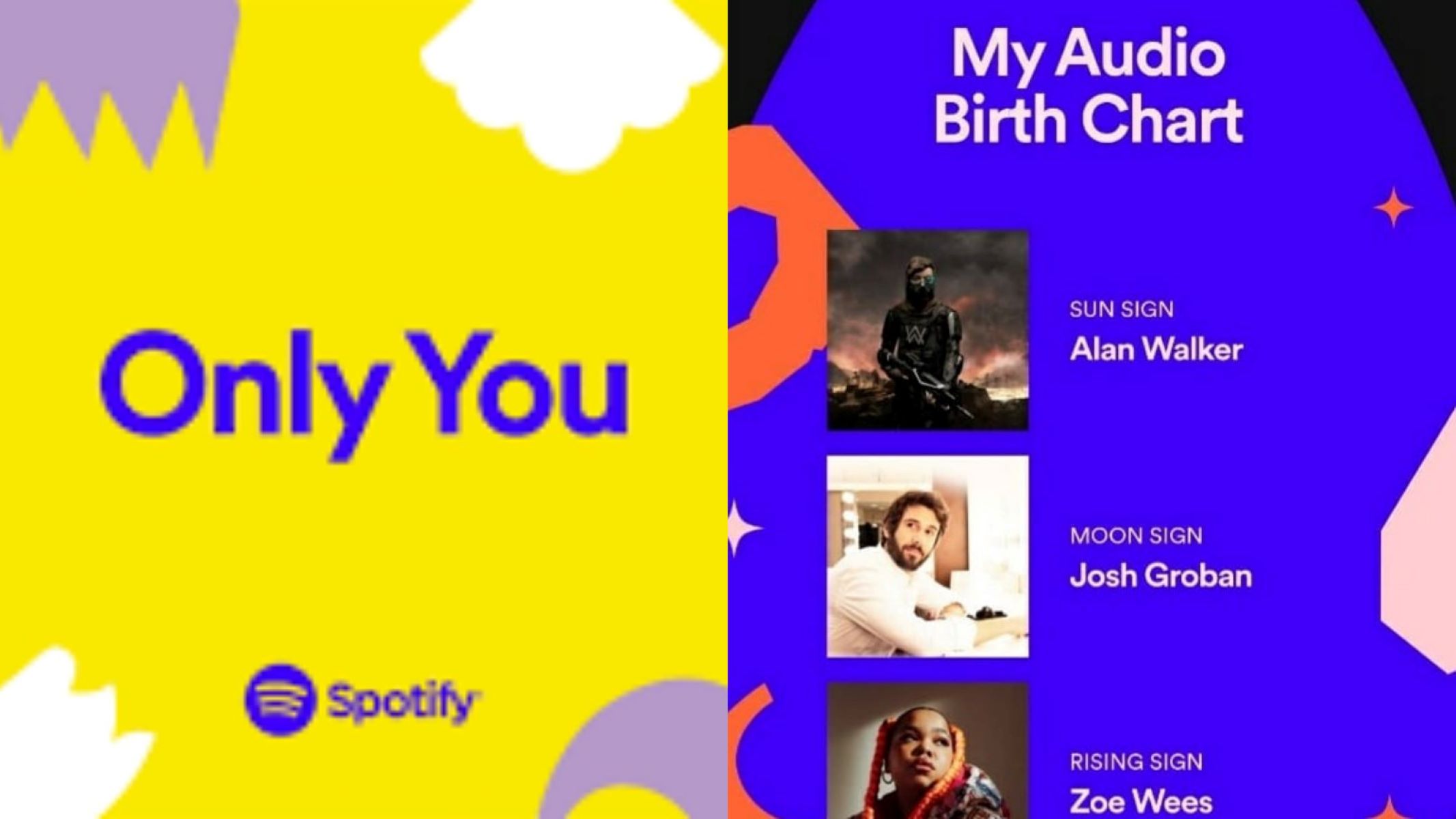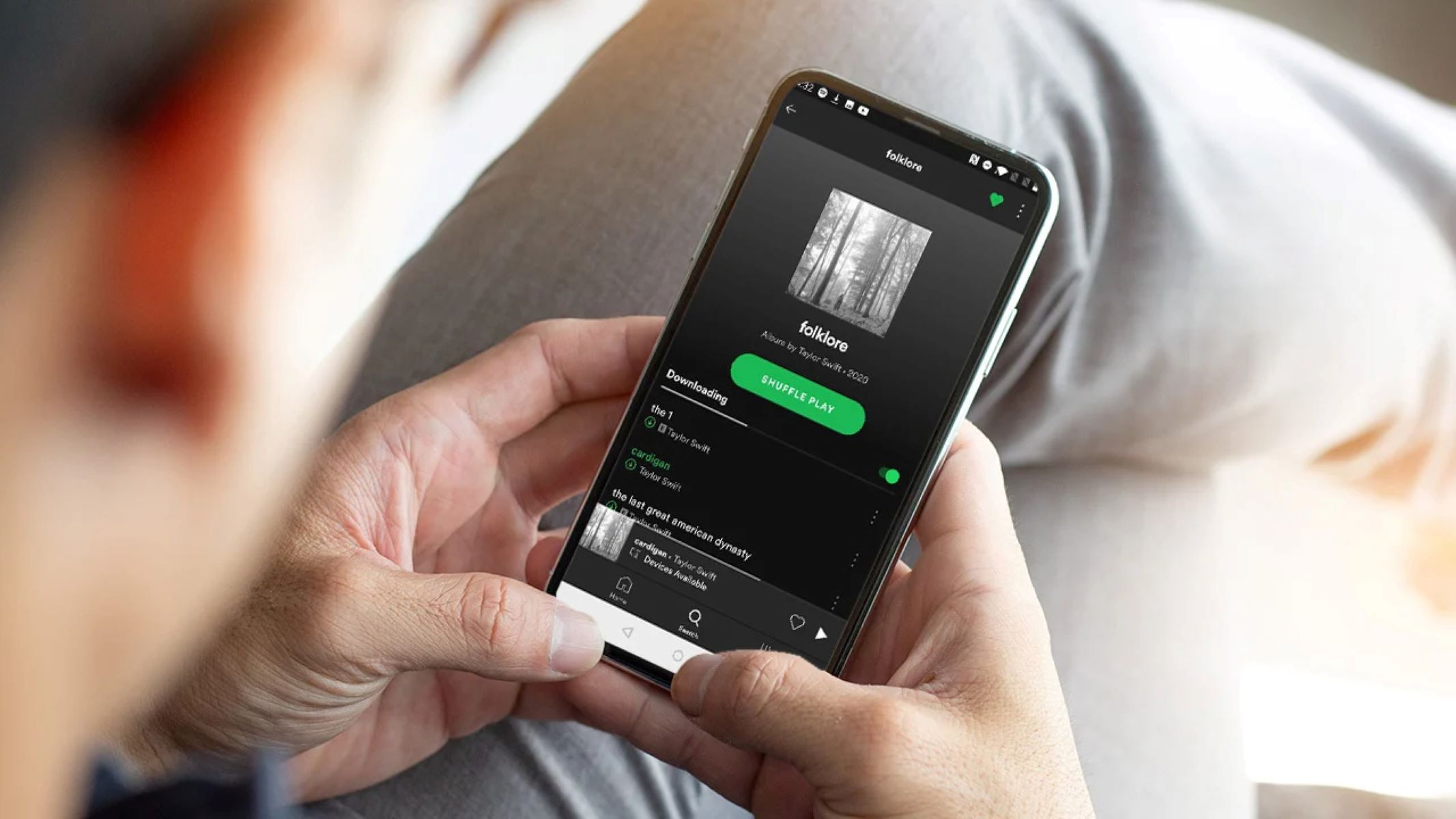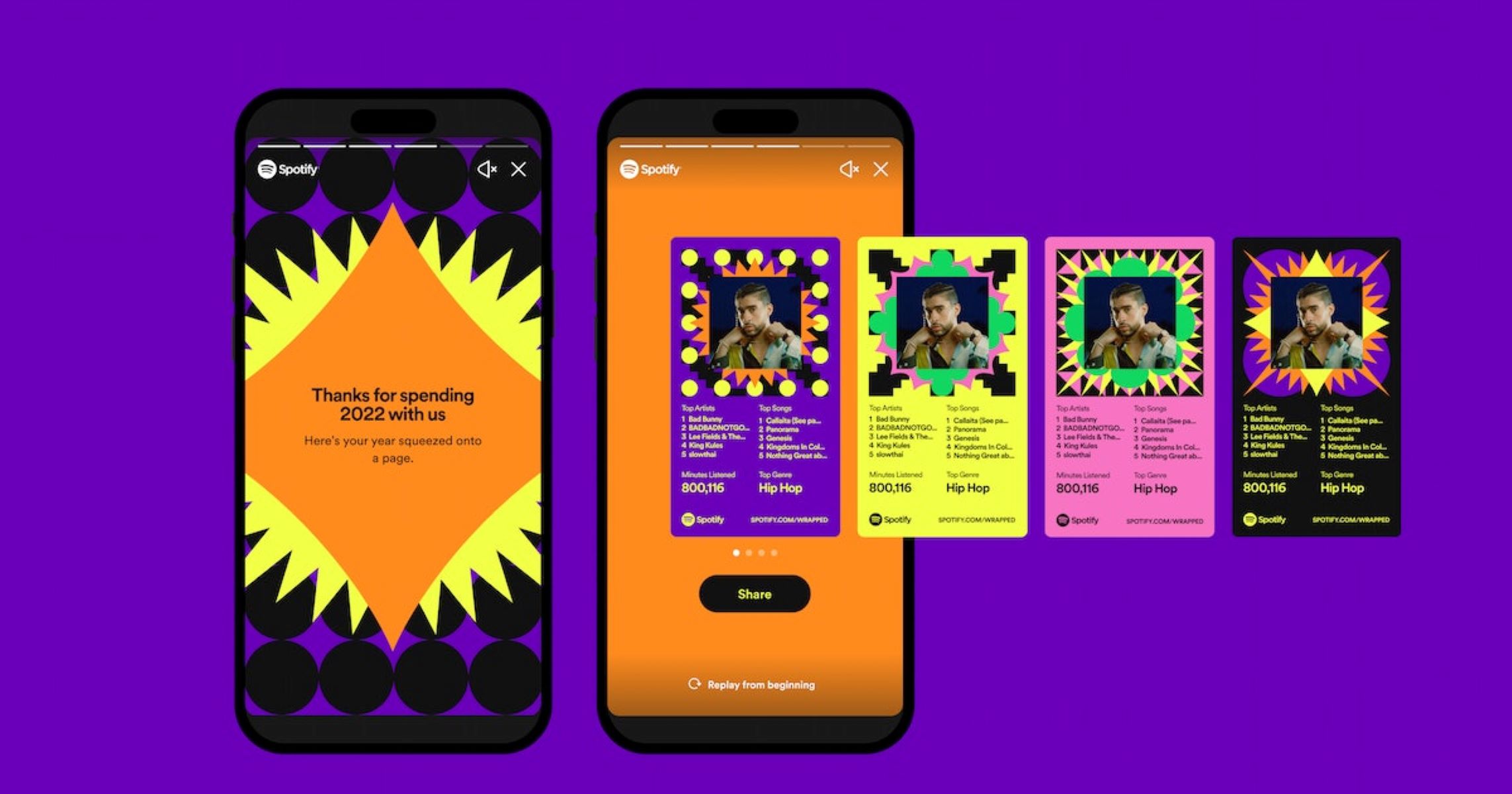Introduction
Welcome to the world of music streaming! With countless platforms available today, Spotify has emerged as a popular choice for music lovers. Whether you’re commuting, studying, or working out, Spotify allows you to access a vast library of songs on any device.
If you are new to Spotify or considering using it, you may have some questions about how much data it consumes. In this article, we will explore how Spotify uses data and provide valuable insights to help you make informed decisions about your data usage.
Being a streaming service, Spotify delivers music directly to your device over the internet. This means that every time you play a song or create a playlist, data is consumed. Understanding how Spotify utilizes data can be crucial, especially if you have limited data plans or want to avoid unexpected charges.
Let’s delve into the world of Spotify and uncover the secrets behind its data usage. By the end of this article, you will have a clear picture of how much data Spotify uses and how you can optimize your streaming experience.
What is Spotify?
Spotify is a popular music streaming platform that allows users to access and listen to a vast library of songs from various genres and artists. It was launched in 2008 and has since gained immense popularity around the world.
One of the standout features of Spotify is its extensive music catalog, which includes millions of songs from both mainstream and independent artists. Whether you’re a fan of pop, rock, hip-hop, classical, or any other genre, Spotify has you covered.
Apart from its vast music collection, Spotify offers a range of features to enhance the listening experience for its users. Users can create personalized playlists, discover new music through algorithms tailored to their preferences, and follow their favorite artists to stay updated with their latest releases.
Additionally, Spotify provides a social aspect to its platform, allowing users to share and collaborate on playlists with friends and connect with other music enthusiasts. This interactive element adds a communal feel to the overall experience and fosters a sense of belonging within the Spotify community.
Another noteworthy feature of Spotify is its availability across multiple devices. Whether you’re using a smartphone, tablet, computer, or even smart speakers, you can access Spotify and enjoy your favorite tunes anytime, anywhere. This cross-platform compatibility ensures that you can seamlessly transition between devices without missing a beat.
Overall, Spotify offers a convenient and immersive music streaming experience, making it a go-to choice for music lovers worldwide. Now that we understand what Spotify is, let’s explore how this platform uses data to deliver your favorite songs to your ears.
How does Spotify use data?
Spotify relies on an internet connection to deliver music to its users. When you use Spotify, your device connects to the Spotify servers to stream or download songs. As a result, data usage is an inevitable part of the Spotify experience.
There are two main ways in which Spotify uses data: streaming and downloading. Let’s take a closer look at each of these methods.
1. Streaming: When you stream music on Spotify, you are essentially playing songs in real-time. As you listen, the data is continuously being transmitted from the Spotify servers to your device. This streaming process ensures a seamless and uninterrupted listening experience.
2. Downloading: Spotify also allows users to download songs for offline listening. When you download music, the songs are saved on your device, allowing you to play them without an internet connection. However, downloading music requires data initially to download the files onto your device.
In addition to streaming and downloading, Spotify also uses data for various other purposes, such as:
- Playback data: Spotify tracks your playback history, including the songs you listen to, the playlists you create, and the time spent on each track. This data helps Spotify personalize your recommendations and curate personalized playlists.
- Discover Weekly and Release Radar: Spotify offers curated playlists like Discover Weekly and Release Radar, which are tailored to your music preferences. These playlists utilize data from your listening history and algorithms to suggest new songs and artists that you might enjoy.
- Advertisements: If you use the free version of Spotify, you will encounter ads within the app. These ads are personalized based on your demographic data and listening habits.
It’s important to note that the amount of data Spotify uses can vary depending on several factors, such as streaming quality, duration of music playback, and whether you are on a mobile network or Wi-Fi. In the next sections, we will explore these factors in more detail and provide insights into how much data Spotify typically consumes.
Streaming quality options
One of the factors that determine the amount of data Spotify uses is the streaming quality you choose. Spotify offers several streaming quality options, allowing you to balance between data usage and audio quality.
Here are the streaming quality options available on Spotify:
- Low: This option streams music at approximately 24 kbps, offering the lowest audio quality. While the low quality setting consumes the least amount of data, it may result in a noticeable reduction in audio clarity.
- Normal: The normal quality setting streams music at around 96 kbps, providing a balance between audio quality and data usage. This is the default streaming quality for Spotify.
- High: The high quality setting streams music at roughly 160 kbps, offering better audio fidelity. This option consumes more data compared to the normal quality setting but provides a more immersive listening experience.
- Very high: The very high quality setting streams music at approximately 320 kbps. This option delivers the highest audio quality but consumes the most data. It is recommended for users with ample data plans or a stable Wi-Fi connection.
To select your streaming quality on Spotify, follow these steps:
- Open the Spotify app on your device.
- Go to the “Settings” section.
- Scroll down to the “Music Quality” or “Streaming Quality” option.
- Choose your preferred streaming quality from the available options.
It’s worth noting that Spotify also offers an automatic streaming option, which adjusts the streaming quality based on your internet connection. This ensures that you get the best audio quality possible without excessive data usage when your connection is stronger.
By selecting a streaming quality option that suits your needs, you can optimize your data usage on Spotify while enjoying an audio experience that meets your expectations.
How much data does streaming music on Spotify use?
The amount of data consumed by streaming music on Spotify can vary depending on several factors, including the streaming quality, duration of music playback, and the platform you are using.
Here is a rough estimation of how much data Spotify uses per hour based on different streaming quality settings:
- Low quality: On average, streaming music at low quality on Spotify uses around 50 MB of data per hour. This is the most data-efficient option if you have a limited data plan or want to conserve data.
- Normal quality: Streaming music at normal quality typically uses around 70-100 MB of data per hour. This is the default setting on Spotify and offers a good balance between data usage and audio quality.
- High quality: If you choose to stream music at high quality, expect Spotify to consume approximately 150-200 MB of data per hour. This option delivers better audio fidelity but consumes more data.
- Very high quality: By selecting the very high quality setting, Spotify can consume around 300-400 MB of data per hour. This option is ideal for audiophiles who prioritize the best audio quality but may not be suitable for users with limited data plans.
It’s important to keep in mind that these data estimations are approximate and can vary based on factors such as the complexity of the music and any compressed audio codecs used by Spotify.
Furthermore, it’s worth noting that data usage during music playback is not constant. Spotify uses a technique called adaptive streaming, which adjusts the stream quality in real-time based on your internet connection. This means that if your connection weakens or becomes unstable, Spotify will automatically lower the streaming quality to avoid buffering and maintain a smooth listening experience.
To monitor your data usage on Spotify and keep track of your consumption, you can check the “Data Usage” or “Mobile Data Usage” settings in the Spotify app on your device. Here, you will find information on how much data Spotify has used over a given period.
By choosing an appropriate streaming quality and keeping an eye on your data usage, you can enjoy uninterrupted music streaming on Spotify while managing your data consumption effectively.
How much data does downloading music on Spotify use?
Downloading music on Spotify allows you to enjoy your favorite songs even when you’re offline. However, it’s important to note that downloading music does consume data, particularly in the initial download process.
The amount of data used when downloading music from Spotify depends on several factors:
- Song file size: The size of the song file determines how much data is required to download it. Generally, longer songs or songs with higher audio quality will have larger file sizes.
- Streaming quality: When you download a song, Spotify uses the streaming quality setting you have selected to determine the audio quality of the downloaded file. Higher quality settings result in larger file sizes and, consequently, more data usage during the download process.
- Album or playlist: If you choose to download an entire album or playlist, the combined file sizes of all the songs will contribute to the overall data usage. Downloading larger collections of music will obviously require more data compared to downloading individual songs.
The exact amount of data used when downloading music on Spotify can vary widely depending on these factors. However, on average, you can expect the following estimations:
- Low quality: Downloading music at low quality on Spotify generally consumes around 1-2 MB of data per minute of music. This is the most data-efficient option for downloading songs.
- Normal quality: Downloading music at normal quality typically uses approximately 2-4 MB of data per minute. This setting strikes a balance between data usage and audio quality.
- High quality: If you choose to download music at high quality, Spotify can consume around 4-8 MB of data per minute. This option offers better audio fidelity but requires more data.
- Very high quality: Downloading music at very high quality can consume approximately 8-16 MB of data per minute. This setting provides the best audio quality but utilizes the most data.
It’s important to consider your available data limits and storage space on your device when downloading music from Spotify. Downloading large playlists or albums at the highest quality settings may quickly consume substantial amounts of data and storage space.
To help manage your data usage, Spotify offers a “Download using Wi-Fi only” setting. By enabling this option, Spotify will only download music when you are connected to a Wi-Fi network, ensuring that your mobile data is not used for downloads.
By understanding the data usage associated with downloading music on Spotify and making informed choices about the download quality and quantity, you can enjoy offline playback without exceeding your data limits.
Does Spotify use more data on mobile or Wi-Fi?
The amount of data that Spotify uses can vary depending on whether you are streaming or downloading music, and whether you are connected to a mobile network or Wi-Fi. Let’s explore how Spotify’s data usage differs between these two connectivity options.
When using Spotify on a mobile network, such as 4G or 5G, the data consumed will depend on various factors, including the streaming quality, duration of music playback, and any additional data usage by the app itself. Streaming music on a mobile network generally uses more data compared to Wi-Fi due to the limitations of mobile data plans and the potential for weaker or less stable connections.
On the other hand, when you are connected to Wi-Fi, Spotify’s data usage tends to be more efficient. Wi-Fi connections are generally faster and more stable, which allows for smoother streaming and downloading experiences. This means that you can enjoy your favorite tunes on Spotify without worrying as much about data usage on Wi-Fi compared to mobile networks.
If you prefer to stream music on Spotify using mobile data, it is important to be mindful of your data usage. Spotify offers various features and settings to help you manage your data consumption:
- Streaming quality: Choosing a lower streaming quality, such as the low or normal quality settings, can significantly reduce data usage on mobile networks.
- Download over Wi-Fi: By enabling the “Download using Wi-Fi only” option in the Spotify settings, you can ensure that music downloads are only performed when connected to Wi-Fi, thus avoiding excessive mobile data usage.
- Offline mode: Utilizing the offline mode allows you to listen to downloaded music without an internet connection, saving your mobile data for other purposes.
It’s important to note that while using Wi-Fi for Spotify can generally reduce data usage, it is still essential to be aware of any data constraints imposed by your internet service provider (ISP). Some ISPs may have data caps or apply fair usage policies, which means that excessive data usage on Wi-Fi could still result in slower speeds or additional charges.
In summary, Spotify’s data usage is generally higher when using mobile data compared to Wi-Fi. To minimize data usage, consider adjusting the streaming quality settings and take advantage of downloading music on Wi-Fi rather than using mobile data. By being mindful of your data consumption, you can enjoy uninterrupted music streaming while staying within the limits of your data plan or ISP restrictions.
Tips to reduce data usage on Spotify
Managing your data usage on Spotify can help you stay within your data plan limits and avoid unexpected charges. Here are some useful tips to reduce data consumption while enjoying your favorite tunes on Spotify:
- Adjust streaming quality: Lowering the streaming quality on Spotify can significantly reduce data usage. Consider using the low or normal quality settings, especially when streaming on mobile networks.
- Download music for offline listening: Take advantage of Spotify’s offline mode by downloading your favorite songs, albums, or playlists over Wi-Fi. This allows you to enjoy music without an internet connection, minimizing data usage.
- Manage automatic downloads: If you have enabled the “Download using Wi-Fi only” option in the Spotify settings, ensure that your downloaded content is not being automatically updated or re-downloaded when connected to a mobile network.
- Create custom playlists: Instead of streaming music on the go, consider creating personalized playlists with your favorite songs. By organizing your music in advance, you can minimize the need for continuous streaming and save on data usage.
- Use Wi-Fi whenever possible: Connect to Wi-Fi networks whenever they are available to enjoy Spotify without consuming your mobile data. Take advantage of home, work, or public Wi-Fi networks to stream, download, and update your playlists.
- Monitor your data usage: Regularly check your data usage settings and monitor the data consumed by Spotify. This will help you stay aware of your usage patterns and identify areas where you can optimize data consumption.
- Consider data-saving modes: Some mobile devices offer data-saving modes that help reduce data usage by limiting background data for apps. Enable these modes to minimize Spotify’s data usage when you’re on a mobile network.
Implementing these tips can help you manage your data consumption on Spotify while still enjoying your favorite music. By being mindful of your streaming and downloading habits, you can make the most out of your data plan and avoid any surprises on your monthly bill.
Conclusion
Spotify is a powerful music streaming platform that offers a vast library of songs for music lovers to enjoy. Understanding how Spotify uses data is crucial to managing your data consumption effectively. By adjusting streaming quality settings, utilizing offline mode, and leveraging Wi-Fi connections, you can reduce data usage on Spotify without compromising your music experience.
When it comes to streaming music on Spotify, the choice of streaming quality plays a significant role in data usage. Lower quality settings consume less data, while higher quality settings provide better audio fidelity at the cost of increased data consumption. Choosing the appropriate streaming quality based on your data plan and audio preferences is key to optimizing your data usage.
Downloading music on Spotify allows for offline listening, ensuring you can enjoy your favorite songs without an internet connection. However, downloading music does consume data during the initial download process. Being mindful of the download quality and quantity can help you manage your data usage while still enjoying offline playback.
Spotify’s data usage can vary between mobile networks and Wi-Fi connections. While streaming music on mobile data tends to consume more data due to limited data plans and potential connection limitations, using Wi-Fi can be more data-efficient. Leveraging Wi-Fi networks whenever possible, managing automatic downloads, and monitoring your data usage can help you make the most of your data plan.
By implementing the tips provided in this article, you can reduce data usage on Spotify and make informed decisions about your streaming and downloading habits. Whether you’re streaming music on the go or enjoying offline playback, being mindful of your data consumption allows you to enjoy Spotify without any surprises on your data bill.
Now that you have a better understanding of how Spotify uses data and how to optimize your data usage, you can confidently enjoy your favorite tunes while staying within your data limits.







